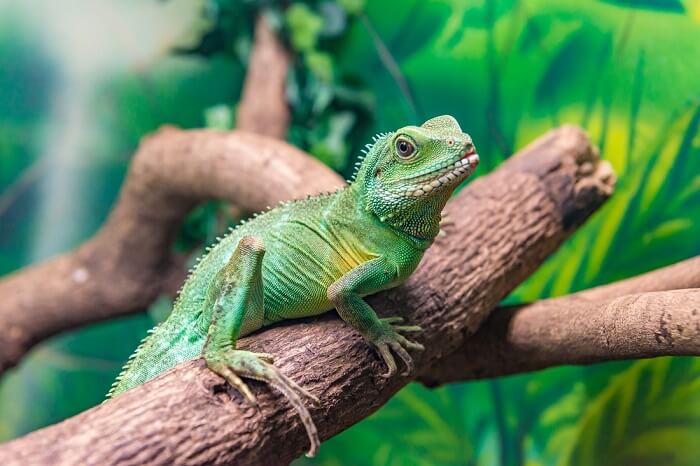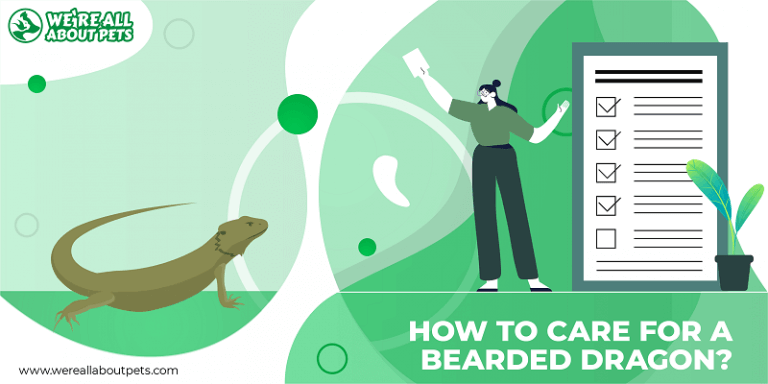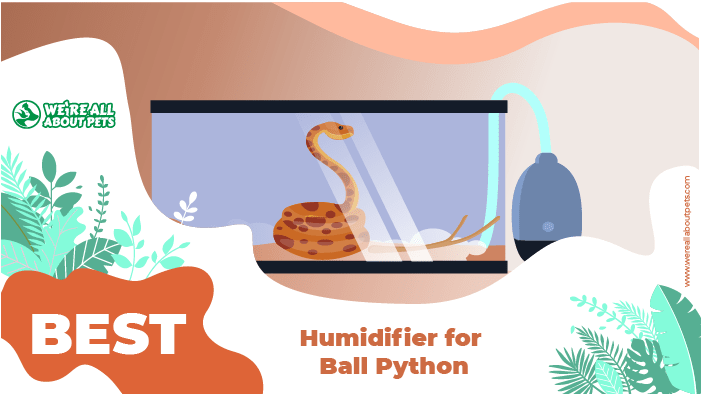Crested Gecko As A Pet: Care, Lifespan, Diet & Habitat
This page contains affiliate links. We may earn money or products from the companies mentioned in this post through our independently chosen links, which earn us a commission. Learn More
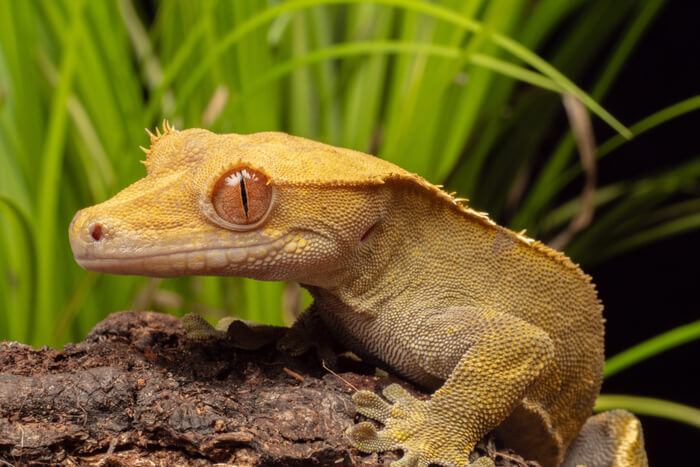
Crested geckos have become very popular pets, and for great reason. They have eyes with beautiful colors and adorable eyelashes. It’s also fun to watch them use their unique ability to walk right up a smooth glass surface.
Because of their eyelashes, you may also see them referred to eyelash geckos. A third name is New Caledonian geckos, because they’re native to that small island in the South Pacific.
Care
Keeping any reptile means providing exactly what they need to thrive, including the proper husbandry and nutrition. With crested geckos, proper care may allow them to live a good life for 15-20 years. The information in this article will help you decide if you can provide that care.
Also Read: The Real Cost Of Owning A Gecko
Cage Size, Setup & Terrarium
Adult crested geckos average 8 inches from nose to tail tip. The cage size should allow them to move around well and exercise with this size in mind. Since they like to climb, the height is more important than the floor size.
The cage for an adult should be at least 18-24 inches tall. You can go as large as a 36-inch-tall enclosure. Glass is preferred over screen sides to allow more space for them to climb and maintain humidity better. It should have a screen top for good ventilation and to allow light and heat bulbs to work more efficiently.
For the truly nerdily curious reader, you can read more about how the feet utilize physics to climb up the surface of the glass.
Substrate
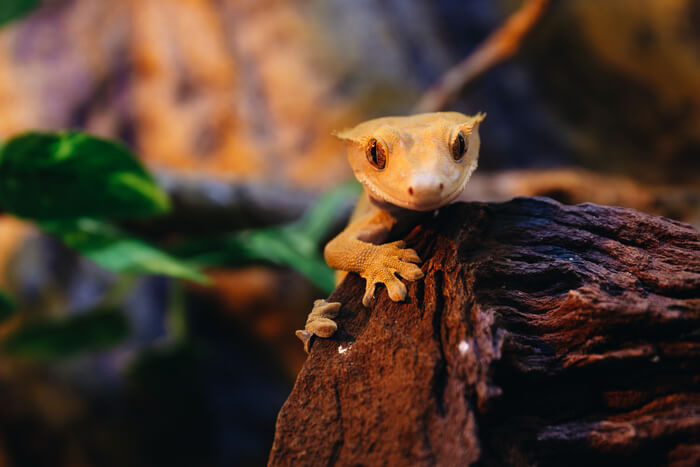
Substrate must allow the expression of natural behaviors, provide a naturalistic environment for comfort, and help maintain the temperature and humidity that they need to thrive. These geckos like to climb, and that’s an important natural behavior to allow them to express. The taller enclosure should have branches and plants to climb upon. Living plants are a great addition if you can care for the plants as well. If you use artificial plants, they should have plenty of leaves.
The leaves provide surface area for water so that humidity can be maintained and they provide hiding areas that feel natural so that your gecko feels safe in the enclosure.
On the floor of the enclosure, you can use something as simple as paper or reptile carpet for easy cleaning, but for a naturalistic aquarium or for live plants, coconut fiber is far better. For live plants, potting soil can be mixed with coconut fiber. Be sure not to add fertilizers or pesticides. In addition to looking more natural, these substrates will help keep the required humidity.
Temperature
All reptiles require a gradient of temperatures so they can regulate their internal temperatures by moving around the enclosure and sitting in different areas. This is achieved by placing a heat source in one location. For crested geckos, a heat lamp on top of the enclosure allows a warm area at the top and a cooler region at the bottom of the enclosure.
Monitor the temperature in both areas using an infrared heat gun or mounted thermometers. The gradient for crested geckos should be 72-82°F during the day. At night the heat lamp can be turned off as long as the temperature remains 70°F and above.
Lighting
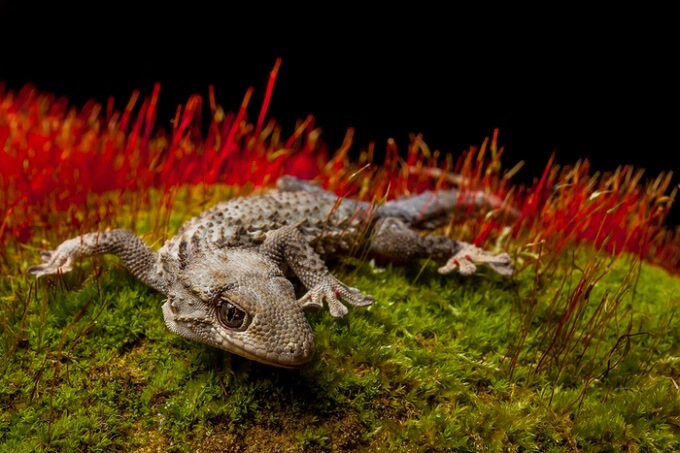
The light should be on a cycle that offers 12 hours of light and 12 hours of darkness. They’ll be more active at night, but no special lighting is required at night. Though there isn’t a recorded need for UV lighting, new studies have shown that for most species, it is beneficial. A low-level UV light is good to have just to be sure that it’s available. It’s not going to harm them, and it may help.
Just make sure that they have a way to hide when they choose to. For good choices, choose a UV bulb that’s appropriate for leopard geckos, like #3 and 4 in our related article on the best UV lamps for leopard geckos.
Humidity
They require moderate humidity, in the range of 50-80%. With a good glass enclosure and the correct substrate, this can happen with spraying the cage surfaces once or twice a day. Use a hygrometer to make sure the humidity is in the right range. If intermittent spraying doesn’t work well enough, then you may need a humidifier for larger cages, or if you live in a particularly dry area. You can learn more in our article in which we compared the most popular humidifiers on the market.
Temperament
Crested geckos will tolerate some handling, but they need to be eased into it. They should be allowed 4-6 weeks in the new enclosure, then slowly start to handle them for short periods on their terms. If they get stressed from the handling, they may lose their tails. Leopard geckos will not regrow a tail once it’s lost, unlike other geckos. A slow approach of the hand, closer each time as they get used to it. Allow them to decide when they’re ready to climb onto your hand.
Diet – What Do Crested Geckos Eat
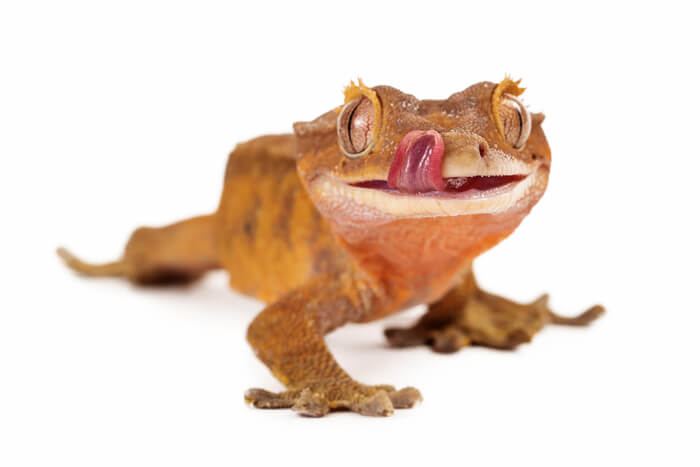
The basis of the diet for crested geckos should be one of the commercially available diets. Most are a powder that’s mixed with water to provide food that’s the consistency of baby food. Once mixed, it should be kept no more than 36-48 hours before a new batch is made. There are a number of companies making these diets, just look for one with a good reputation for making healthy reptile diets.
v The insects should be fed a healthy vegetable diet prior to being offered and they should be dusted with a calcium supplement when they are fed to your gecko.
Health Concerns
Your gecko will need to see a veterinarian periodically to keep in good health. Some of the common health concerns for crested geckos include:
- Internal parasites
- Nutritional deficiency
- Trauma (tail loss is common)
- Burns
- Skin infections
- Oral infections
- Respiratory infection
In addition to seeing a veterinarian for health concerns, annual wellness examinations are important for keeping a healthy pet. If you need to find an experienced reptile veterinarian, start your search here.
Summary
Crested geckos can make great pets if you’re able to provide the correct care. After reading this article, you feel that you can provide a good home, then you may want to look for a companion in your area. They’re very cute and fun to have in your home!
Frequently Asked Questions
Do crested geckos need a heat lamp?
Yes, they need to have a gradient of temperatures ranging from 72-82°F, and that requires a heat lamp in one area of the enclosure. A lamp placed on the top is most common for this animal.
Is it easy to take care of a crested gecko?
Compared to most reptiles, they’re on the easier end of the spectrum. However, you must provide the right temperature, enclosure, humidity, diet and medical care.
Do crested geckos die easily?
If they’re provided the right care, then they’re actually quite hardy and can live 15-20 years.
Do crested geckos like to be held?
They tolerate it as long as you get them used to it slowly. If you’re looking for a pet that likes to be handled a great deal, then they’re probably not the right pet for you, but they can get sued to some handling, given enough time to adapt slowly.
What is a crested gecko's favorite food?
There are commercially available diets for crested geckos that should be the main portion of their diet. They also like to eat some insects, like crickets.
How big do crested geckos get?
A full grown crested gecko has an average size of 7-9 inches in total length, and 4 to 5 inches snout-to-vent length (SVL)






